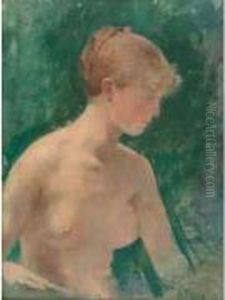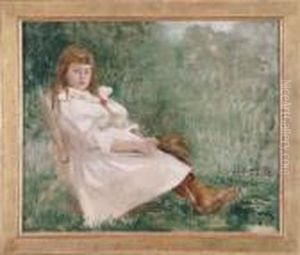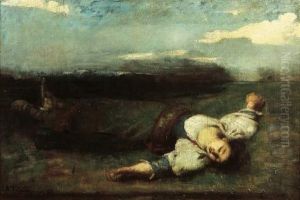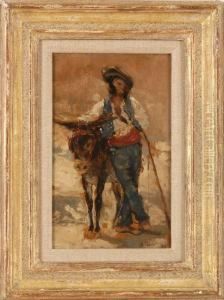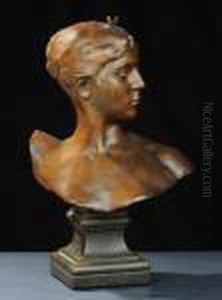Alexandre Jean Joseph Falguiere Paintings
Alexandre Jean Joseph Falguière was a prominent French sculptor and painter, born on September 7, 1831, in Toulouse, France. His contributions to art are marked by a distinctive blend of classical tradition and realistic observation, making him a notable figure in 19th-century French art. Falguière showed an early inclination towards art, which led him to study at the École des Beaux-Arts in Paris. He was a pupil of the renowned sculptor Jean-François Toussaint. His talent was recognized early when he won the prestigious Prix de Rome in 1854, which provided him with the opportunity to study in Rome, an experience that greatly influenced his artistic development.
Falguière's career was distinguished by both his sculptures and his paintings, although it is his sculptural work that has garnered the most recognition. His sculptures often depicted allegorical themes, historical figures, and subjects from mythology with a keen sense of realism and detail. One of his most famous works is the 'Winner of the Cockfight' (1864), which exemplifies his ability to combine classical themes with a modern sensibility. This piece, among others, secured his reputation and led to numerous commissions from the French government and private patrons.
In addition to his individual works, Falguière also contributed to collaborative projects, such as the decoration of the Paris Opéra and the Hôtel de Ville. His influence extended beyond his own creations through his role as a teacher at the École des Beaux-Arts, where he mentored the next generation of artists, including notable figures like Henri Matisse.
Falguière was awarded the Legion of Honor in 1870, a testament to his impact on French art and culture. Despite his success, he remained committed to his artistic ideals, continuously exploring and refining his style throughout his career. Alexandre Falguière's legacy is that of a dedicated artist who bridged the gap between traditional academic art and the burgeoning movements that would redefine French art at the turn of the century.
He passed away on April 20, 1900, in Paris, but his works continue to be admired in museums and collections around the world, testament to his enduring influence on the field of sculpture and the broader domain of art.
